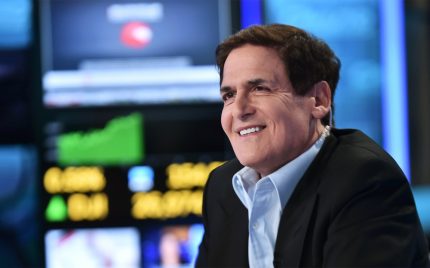
The Surprising Science Of Meetings – Book Review
6 yearsago 1 Comment 2.2k Views
Aldous Huxley was wrong. Bad meetings – not mescaline – open the doors of perceptions. Disappointed meetings seem to have a strange human manipulation. At that time, the participant could do nothing but look around, nodding over, unconsciously checking the phone and nodding again. Such meetings are the strong inspiration for Steven G. Rogelberg to write the book “The Surprising Science of Meetings” – one of the most effective productivity meeting books ever.
The authors of effective meeting guides often do not mention the impact of bad meetings. Instead, they often start with a series of statistics to catch readers’ attention. Steven Rogelberg, Professor Chancellor at the University of North Carolina, Charlotte, is no exception. Steven refers to the number of 55 million meetings a day in the United States and they cost the US $1.4 trillion annually, excluding indirect costs such as employee disagreement. “Too many meetings” were 47% of American employees who thought this was their time-consuming reason at the workplace.
However, Rogelberg did not think that companies should ignore the meeting. “Is it true that manager Peter Drucker was right when he said:‘Meetings are a symptom of poor corporate governance. The less the meeting, the more efficient the company?’ ”- Rogelberg asked this question right at the beginning of the book. After that, he stressed the answer is NO. The abolition of meetings is the wrong solution. Schedules with too few meetings lead to unforeseen risks for employees, leaders, groups, and organizations. Instead, the author advises breaking the cycle of bad meetings by applying scientific research to improve the quality of the meeting.
If anyone claims to be a meeting scientist, it’s Rogelberg. He studied meetings using field surveys, laboratory studies, and experiments combining his colleagues for 15 years. In this book, he combines his findings and the research of other scientists to reach the meeting’s productivity, some of the research he has set out to really open the eyes for readers.
It is not surprising to know that the meeting leaders usually take the time to make a reflection on the agenda of the meeting, such as goals; headings; potential issues to discuss; motivation and useful strategies to enforce … before any of their meetings. But in fact, Rogelberg tells us that based on research, the agenda does not really improve meeting productivity. He cites a 2003 study of senior leadership groups at 187 companies with a market capitalization of at least $1 billion, suggesting that meetings in half of their companies are identical or spontaneous.
Solution: build a more purposeful meeting schedule. “When planning an event, we often have to think carefully about details, work-flow, experience, and approach. This same mindset and process should be applied to planning a meeting.” – wrote Rogelberg. “Normally a meeting with senior leaders usually costs between $1,000 and $3,000 when considering the time and salary of the participants, many people can say is quite expensive even can ensure the smoothest meeting planning possible.”
Regarding the problem-solving story for meetings, Rogelberg found that the “synergistic effect” effect (occurs when people focus on solving problems together during the meeting). usually does not account for 85 to 90% of the meeting time, which we need to achieve if we want to have an effective meeting. In fact, he mentioned that more than 80 studies have found that people who often talk a lot during the meeting produce significantly lower quality than the non-talking participants. Worse, the bigger the meeting, the more obvious this effect is. Rogelberg’s advice to leaders, in this case, is less talkative and more silence in meetings. He advised brainwriting instead of the brainstorm: The simplest, the meeting participants will write down their answers to some open questions, such as “What can we do to improve your XYZ process? ” without discussing or chatting with each other. The answers will then be rearranged and pinned on the board, and meeting participants vote for their favorite answers. “The whole process is more remarkable because of the attractiveness, time efficiency and pressure that participants have to say is almost impossible” – explains Rogelberg.
Surprisingly, the book does not completely answer my biggest question in a meeting: How is there a participant’s unwillingness to read the documents sent before the meeting, even if reading the material is very important for the outcome of the meeting. However, Rogelberg proposed a technique used at Amazon that could help eliminate this problem. Amazon requires in meetings, ideas, concepts, and issues that need to be carefully prepared beforehand. After that, the meeting will begin by taking a few minutes for participants to read all of this document. “This can last somewhere between 10 and 30 minutes and not before the meeting – they’re part of the meeting” – Rogelberg said.
Like most books about other meetings, “The Surprising Science of Meetings” provides readers with more useful advice. The reader can fully notice and anticipate the signs of a bad meeting happening. After all, improving the quality of the meeting is also about improving the productivity of the business.
——————–
How do you think about this article? Please share it with us via the comment section below.
PRIMUS – FIRST CLASS JOBS ONLY






Interesting reading reminding how painful and inefficient are meetings.
The hierarchical structure of organizations is also leading to this inefficiency.
It is sometimes a place for ego show off rather than problem solving.
To me, a meeting should not be prepared with a detailed agenda.
We should come up directly with the issues encountered in our processes and trying to solve them right at the meeting.
This implies some rules where all attendees voice is valued whatever the department they belong to.
Holding an efficient meeting shall be taught at school.